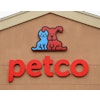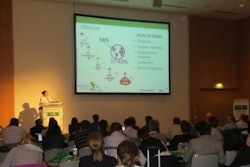
Fiber sources can be found in nearly all pet foods, and are used for a variety of reasons, according to the industry. “Fiber is not considered an essential nutrient in your dog's diet, but it is present in almost every commercial dog food,” said Doctors Foster and Smith, a US-based direct-to-door pet supply company. “While dogs do not derive any energy from fiber, adding fiber to a diet improves colon health, helps with weight management, and helps with diarrhea, constipation and diabetes mellitus.”
Some of the most common sources of pet food fiber are rice hulls, corn and corn by-products, soybean hulls, beet pulp, bran, peanut hulls and pectin. Vegetable and fruit fibers, cellulose and beet pulp have come into play particularly with the rise of grain-free pet food formulas and the resulting need for alternative fiber sources, according to M-Fiber/Renew Biomass, which produces MFiber, a grain-free alternative fiber source for pet food.
Fiber’s place in pet food trends
Fiber sources can be seen as part of the larger trend of functional ingredients — that is, ingredients added to pet food to serve a specific functional purpose catering to consumer needs (such as a particular health or nutritional benefit). The issue of intestinal health is one such purpose. “The importance of regular intake of dietary fiber is now well recognized in human health,” said the Pet Food Industry Association of Australia (PFIAA), and so has gained traction in pet food. “Dietary fiber provides bulk and helps to regulate stool volume and consistency,” said PFIAA. “Soluble dietary fiber can also have positive health benefits for the animal by selectively stimulating the growth and activity of the bacteria that live in the lower part of the intestine, to provide a natural defense mechanism against invasion by bacteria that are potentially damaging to the animal with important potential benefits.”
Functional ingredients, in turn, are part of an even broader trend — specialty pet food. As a significant preference in the industry, pet food manufacturers are catering to more diverse and individualized preferences than ever. Specialty pet foods and even treats now cover a wide range of concerns, including those related to nutrition and health. And with this trend continuing to grow, there is a constant search for new functional ingredients to meet those concerns.
Industry partnerships and research
One way for manufacturers to expand their fiber ingredient options is through ingredient partnerships. Diana Pet Food, for example, has formed a strategic partnership with Dilumix, a pet food ingredient producer based in Brazil, which will jointly manufacture and market natural sugarcane fibers. “Dietary fibers play an important role in the management of overweight pets, obesity and diabetes which increasingly affect pet populations,” said Diana in a press release. “Fiber sources from cereal grains, whole grains and fruits are receiving special attention from the pet food industry. Aside from their nutritional and nutraceutical properties, these sustainable fiber sources have positive appeal for pet owners due to their transversal health benefits in weight and obesity management, intestinal health, hairball control, dental hygiene and glycemic control.”
The product the companies are working on, the Fiber 3DTM, will be marketed by the brand Vivae, a Diana Pet Food business. The partnership between Diana Pet Food and Dilumix will improve the technical performance of the product meeting market demand, develop market expertise and increase the worldwide sales network, according to Diana. The alliance will be supported by a new Dilumix plant, expected by year-end 2018.

Insoluble fibers such as sugarcane increase the electric energy required to extrude, may reduce starch cooking, and result in the production of less expanded, denser and harder kibbles. | PhanuwatNandee.iStockPhoto.com
As with most ingredients used in pet food, fiber’s potential interactions with the extrusion process are vital knowledge for manufacturers. A 2016 research paper published in Animal Feed Science and Technology evaluated the effect of fiber type and particle size on extrusion processing parameters and kibble macrostructure of dog foods using a single screw extruder. In treatment one, guava fiber was added to a control formula at different inclusion levels. In treatment two, two fiber types (sugarcane and wheat bran) and two fiber particle sizes were compared to a control product. The processing conditions were not changed for any treatment.
According to the research, guava fiber inclusion resulted in a linear increase in temperature, pressure and specific mechanical energy input during extrusion, whereas starch cooking and radial expansion decreased linearly. Kibble density and cutting force increased linearly with guava fiber inclusion. In treatment two, fiber addition also increased specific mechanical energy and decreased radial expansion; however, the latter was compensated by an increase in longitudinal expansion in the case of sugarcane fiber, resulting in no change in kibble density. Cutting force was higher for fiber-supplemented foods, similar to treatment one, but sugarcane fiber had a higher impact on hardness than wheat bran. The finely ground fibers led to higher starch gelatinization and kibbles with lower piece density.
To summarize, said researchers, insoluble fibers such as guava fiber, sugarcane and wheat bran at high inclusion rates increase the electric energy required to extrude, may reduce starch cooking, and result in the production of less expanded, denser and harder kibbles. However, kibble characteristics are also significantly impacted by fiber type and particle size.
The future of fiber in pet food
As with all specialty ingredients, fiber will continue to find its place in pet food formulations. The variety of options needed will likely hold as grain-free and other alternative diets keep finding space on specialty shelves, and increasing consumer needs for health- and nutrition-based pet foods affect the market for the foreseeable future.
More on pet food ingredient issues

















